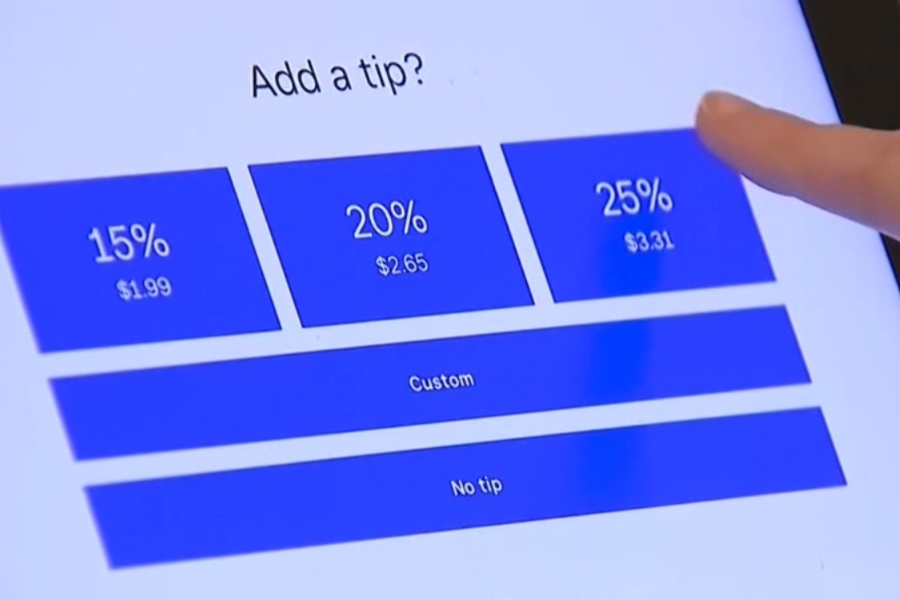As we navigate an increasingly fast-paced world, the expectation for seamless digital interactions has skyrocketed. In response to this demand, tip screens have emerged as an innovative tool designed to enhance user engagement and satisfaction across various sectors, including retail, hospitality, and service industries. These digital interfaces provide a straightforward way for customers to leave gratuities, improve customer service, and foster stronger relationships between businesses and their clientele.
What Exactly is a Tip Screen?
A tip screen is an interactive digital display that prompts customers to leave a gratuity after they receive a service. These screens are usually integrated into point-of-sale (POS) systems, mobile payment applications, or self-service kiosks. By offering a convenient method for tipping, tip screens not only enhance the overall customer experience but also encourage patrons to express their appreciation, which can boost employee morale and improve service quality.
The Evolution of Tipping
Tipping has long been a tradition in the service industry, but the old methods—such as cash tips or handwritten notes—are becoming less practical in a digital-first world. With the rise of cashless payments and mobile technology, there is a growing need for modern tipping solutions. Tip screens serve as a contemporary answer to this demand, simplifying the tipping process while allowing businesses to customize the experience in line with their brand identity and customer preferences.
Advantages of Using Tip Screens
- Convenience for Customers:
Tip screens make it incredibly easy for customers to show appreciation for excellent service. With just a few taps, patrons can select a tip amount and complete their payment without needing to deal with cash or coins. - Higher Tips for Employees:
By streamlining the tipping process, tip screens often lead to increased gratuity amounts. The straightforward nature of these screens encourages customers to leave tips more consistently and generously. - Enhanced Customer Experience:
A well-designed tip screen can positively conclude a service interaction, leaving a lasting impression on customers. A smooth tipping process fosters loyalty and encourages repeat visits. - Insights and Analytics:
Tip screens can yield valuable data about customer behavior and preferences. Businesses can analyze tipping trends, average gratuity amounts, and peak tipping times to refine their service strategies and employee incentives.
How Do Tip Screens Function?
Typically integrated with existing POS systems or mobile payment platforms, tip screens appear once a transaction is completed. They present customers with various tipping options—often in percentage format (e.g., 10%, 15%, 20%) or as custom dollar amounts. After selecting their desired tip, customers confirm the transaction, which is then added to their total bill.
Advanced tip screens may also feature:
- Personalized Messages: Businesses can customize the display with thank-you notes or promotional messages, enhancing the customer experience.
- Feedback Options: Customers can provide feedback directly through the screen, helping businesses gather valuable insights for service improvement.
- Charitable Donations: Some configurations allow customers to donate to charities, offering an alternative to traditional tipping.
Designing an Effective Tip Screen
Creating a successful tip screen goes beyond mere integration into payment systems. The design and functionality of the screen are crucial for its effectiveness. Here are key aspects to consider:
- User-Friendly Interface:
Ensure the screen is intuitive and easy to navigate, with clear tipping options. Avoid overwhelming users with too many choices, and ensure buttons are large enough for easy tapping. - Customization:
Align the tip screen with your brand’s identity by incorporating your colors, logo, and messaging for a cohesive customer experience. - Psychological Triggers:
Leverage the psychology of tipping in your design. For example, defaulting to a mid-range tip percentage can subtly encourage customers to select that option. Positive messaging, like “Thank you for supporting our team,” can also inspire generosity. - Accessibility:
Ensure that the tip screen is accessible to everyone, including those with disabilities. Consider implementing voice-activated options or ensuring compatibility with screen readers.
Frequently Asked Questions
Q: Are tip screens secure?
A: Yes, tip screens are built with security in mind. They integrate with secure payment systems that adhere to industry standards for data protection, ensuring safe and confidential transactions.
Q: Can tip screens be customized for different businesses?
A: Definitely. Tip screens are highly adaptable, allowing businesses to tailor the interface to fit their brand, service type, and customer preferences.
Q: Do tip screens influence the amount customers choose to tip?
A: Research indicates that tip screens can positively affect tipping behavior. The convenience and visibility of the options often lead to higher gratuity amounts compared to traditional methods.
Q: How do tip screens manage customer feedback?
A: Many tip screens provide customers with the option to leave feedback directly on the interface. This feedback can be instrumental for businesses seeking to enhance service quality and customer satisfaction.
Q: What types of businesses can benefit from tip screens?
A: Tip screens are advantageous in a variety of service industries, including restaurants, cafes, bars, salons, and more. Any business that relies on tipping can enhance its operations through the use of tip screens.
Conclusion
Integrating tip screens into your business is not just a technological upgrade; it’s a strategic decision that can elevate customer satisfaction, increase employee tips, and provide insightful data on customer behavior. By creating a seamless and user-friendly tipping experience, businesses can cultivate stronger connections with their customers and foster an inviting atmosphere that encourages repeat visits.
Stay updated with the latest trends and stories at The News.

